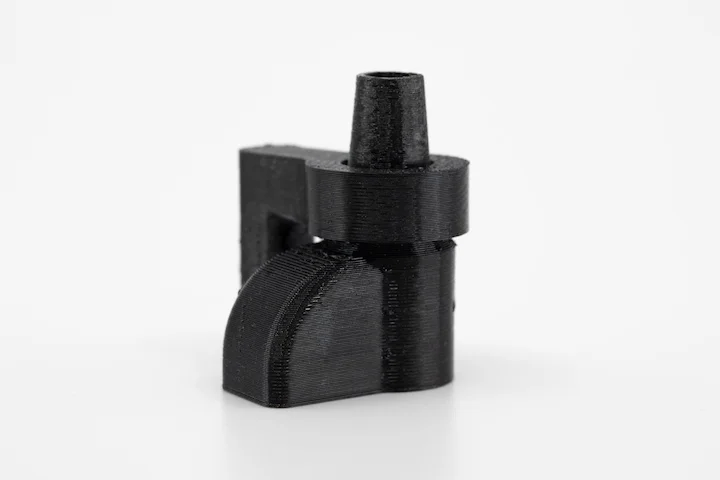Ultem 1010 is a high-performance thermoplastic material that is widely used in 3D printing, particularly in industries that demand exceptional mechanical, thermal, and chemical properties. Ultem 1010 is known for its high strength, heat resistance, and chemical resistance, making it suitable for a range of applications. Some common applications of Ultem 1010 in 3D printing include:
Aerospace Components: Ultem 1010 is often used in aerospace applications due to its ability to withstand high temperatures, flames, and chemicals. It is used for producing interior components, brackets, ducting systems, and other parts in aircraft and spacecraft.
Automotive Parts: The material’s durability, heat resistance, and resistance to chemicals make it suitable for automotive applications. It can be used to produce under-the-hood components, engine covers, and various interior parts.
Functional Prototypes: Ultem 1010 is frequently used for creating functional prototypes that accurately represent the properties of final parts. This is valuable for testing and validation before mass production.
Industrial Tooling: The material’s high strength and resistance to wear and chemicals make it suitable for producing tooling, jigs, fixtures, and molds used in manufacturing processes.
Customized Production Tools: Ultem 1010 can be used to create custom production tools that need to withstand high temperatures and mechanical stress. This includes tools used in injection molding, thermoforming, and other manufacturing processes.
Oil and Gas Industry: Due to its chemical resistance and high temperature resistance, Ultem 1010 is used to create components used in the oil and gas industry, including parts that come into contact with aggressive fluids and high temperatures.
Electrical and Electronic Components: The material’s electrical insulation properties, flame resistance, and mechanical strength make it suitable for producing enclosures, connectors, and housings for electrical and electronic devices.
Medical Devices: Ultem 1010’s biocompatibility and resistance to sterilization methods make it suitable for producing certain medical devices and equipment, such as surgical instruments and housings for medical equipment.
Aerospace Interiors: Ultem 1010’s compliance with aerospace regulations and its ability to produce complex geometries make it suitable for creating interior components for aerospace applications.
Food and Beverage Industry: The material’s high temperature resistance and chemical resistance make it suitable for producing parts and equipment used in food processing and beverage production.
Chemical Processing Equipment: Ultem 1010’s resistance to a wide range of chemicals makes it suitable for producing components used in chemical processing equipment and systems.
Environmental Applications: The material’s durability and resistance to UV radiation make it suitable for producing parts used in outdoor or environmental applications. These applications highlight the versatility of Ultem 1010 in industries that require high-performance and durable parts. When using Ultem 1010 for 3D printing, it’s important to consider its specific properties and follow proper printing and post-processing guidelines to achieve optimal results.









